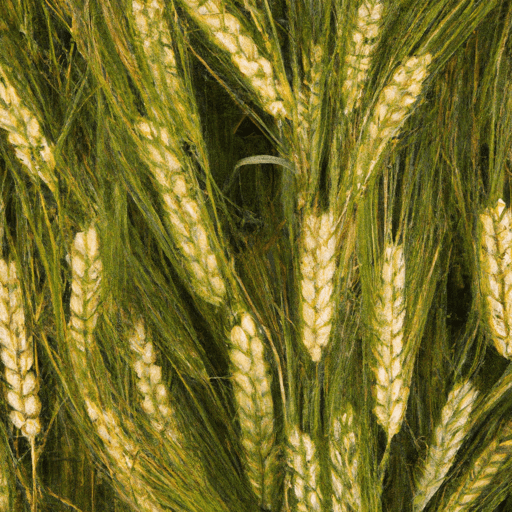The Versatile Grain: Exploring the Wonders of Barley
Barley, a hearty and ancient grain, has been a staple food for centuries and for good reason. Known for its nutty flavor and appealing chewy texture, barley stands out as a versatile ingredient that can elevate a wide range of dishes. Whether you’re a seasoned cook or a curious beginner, exploring the wonders of barley will surely broaden your culinary horizons.
Taste and Texture
Barley boasts a unique taste that is best described as rich, nutty, and slightly sweet. Its pleasant flavor profile adds depth to both savory and sweet recipes. When cooked, barley becomes tender with a pleasantly chewy texture, making it a delightful addition to stews, soups, and salads.
Culinary Uses
Barley has an impressive versatility in the culinary world, enhancing a variety of dishes:
1. Hearty Soups and Stews
Barley’s ability to absorb flavors while retaining its texture makes it an excellent addition to heartwarming soups and stews. Whether in a classic beef barley soup or a vegetarian barley vegetable stew, this grain adds a comforting element to the dish.
2. Salads and Grain Bowls
Barley’s chewy texture makes it a great choice for salads and grain bowls. Combine it with vibrant vegetables, fresh herbs, and a zesty dressing for a refreshing and satisfying meal. Barley also pairs excellently with proteins like grilled chicken or shrimp.
3. Risottos and Pilafs
In the world of rice alternatives, barley shines as a star performer. Its creamy consistency, when cooked in risottos or pilafs, creates a comforting and flavorsome dish. Loaded with aromatic vegetables, herbs, and spices, barley risottos and pilafs offer a delightful change to traditional rice-based recipes.
4. Baking and Desserts
Believe it or not, barley can even find its way into delicious desserts. Ground barley flour can be used as a nutritious addition in baked goods like bread, cookies, and muffins. Its distinct flavor and lightness add complexity and character to sweet treats.
Nutritional Value
Beyond its culinary merits, barley also boasts an array of nutritional benefits. Packed with fiber, vitamins, and minerals, it can play a valuable role in a balanced diet. Here are some key nutritional facts about barley:
- Fiber-rich: Barley is an excellent source of dietary fiber, which promotes digestive health and helps regulate blood sugar levels.
- Vitamins and minerals: It contains essential vitamins and minerals such as vitamin B, magnesium, phosphorus, and iron, which contribute to overall well-being.
- Low in fat: Barley is naturally low in fat, making it an excellent choice for those seeking a wholesome and satisfying meal.
Interesting Facts and History
Barley has a fascinating history that spans back to ancient times. Here are a few intriguing facts about this remarkable grain:
- Ancient Superfood: Barley is one of the oldest cultivated crops, with evidence of its consumption dating back over 10,000 years ago. It was a dietary staple for civilizations such as the Egyptians and ancient Greeks.
- Beer’s Beginnings: Barley played a fundamental role in the development of beer. Dating back to ancient Mesopotamia, barley was used to brew one of the world’s first alcoholic beverages.
- Sacred Grain: In ancient Greece, barley was associated with the goddess Demeter, representing fertility and the harvest.
Conclusion
Barley’s distinct taste, versatility, and rich history make it a true culinary gem. From savory soups and salads to creamy risottos and even desserts, this ancient grain can transform a range of dishes into flavorful and satisfying meals. Alongside its nutritional value, barley is a fitting addition to any pantry, inviting creativity and nourishment into the kitchen. So, why not embrace the wonders of barley and embark on a culinary adventure that spans centuries?
Barley:
Origin and History: Barley (Hordeum vulgare) is one of the world’s oldest cultivated grains. It is believed to have originated in the Fertile Crescent of the Middle East around 10,000 years ago. It was used by ancient civilizations, including the Egyptians, Greeks, and Romans, as a staple food and for making beer.
Common Uses: Barley is used in a variety of culinary preparations, both as a whole grain and in processed forms. Whole grain barley is often used in soups, stews, pilafs, and salads. It can also be malted and used in the production of beer and whiskey. Processed forms include barley flour, flakes, and pearl barley.
Nutritional Benefits: Barley is a nutritious grain that offers several health benefits. It is a good source of dietary fiber, which aids in digestion and promotes a feeling of fullness. It also contains important minerals such as manganese, selenium, phosphorus, and magnesium. Additionally, barley is a rich source of vitamins like B vitamins, including thiamin (B1), niacin (B3), and folate.
Unique Properties: One of the unique properties of barley is its ability to grow in various climates, including cooler regions with shorter growing seasons. Barley has a tough outer hull that needs to be removed before consumption. An interesting fact is that barley grains have a protective layer called the aleurone layer, which is rich in heart-healthy oils.
Historical Significance: Barley has played a significant role in various cultures throughout history, particularly in the development and progression of agriculture. In ancient Egypt, barley was considered a sacred grain and was used as a form of currency. It was also used as a dietary staple by Roman gladiators because of its high energy content. Furthermore, some historians believe that barley was used to make one of the first fermented beverages, making it an important precursor to modern beer.
These are some factual details about barley, covering its origin, common uses, nutritional benefits, unique properties, and historical significance.




Use the share button below if you liked it.
It makes me smile, when I see it.